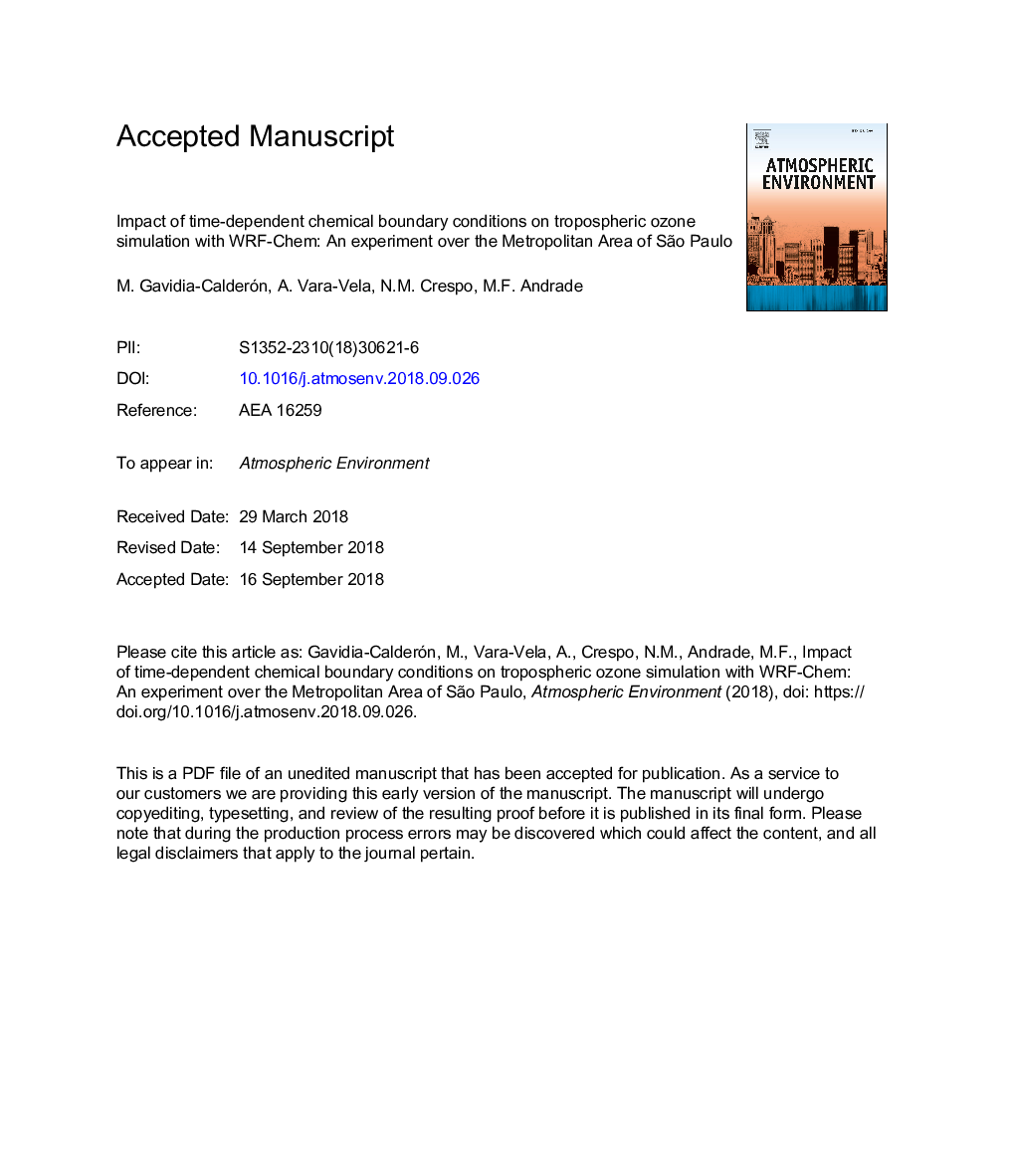| Article ID | Journal | Published Year | Pages | File Type |
|---|---|---|---|---|
| 11017752 | Atmospheric Environment | 2018 | 26 Pages |
Abstract
WRF-Chem (Weather Research and Forecasting with Chemistry Model) is being used to perform air quality forecast over the southeast Brazil with a domain centered in the Metropolitan Area of São Paulo (MASP). The simulations are used to understand the pollutants behavior concerning the fluxes to and from the urban areas, to examine the formation of secondary pollutants (e.g., tropospheric ozone), and to validate the efficacy of air quality policies implementation, particularly the ones that are related to the vehicular fuel used in the region. One important factor to improve the air quality simulations is the configuration of suited inflow boundary conditions for the chemical species. In that context, the objective of this study is to assess the impacts of using time-dependent Chemical Lateral Boundary Conditions (CBC) on tropospheric ozone simulations with WRF-Chem. Two simulations were carried out using Carbon-Bond Mechanism version Z (CBMZ). The first simulation was a set-up to run with WRF-Chem default CBC, and the second one using time-dependent CBC obtained from MOZART-4 (Model for Ozone and Related chemical Tracers, version 4) simulations. The period of study was from May 15 to May 18 and from October 30 to November 1, 2006, when a comprehensive experiment with ozonesondes launching and surface measurements was performed. Results show that using MOZART-4 CBC reduced mean bias, RMSE and slightly improved correlation coefficients for ground level ozone as well as ozone vertical profile above 3â¯km. These improvements were more significant during periods with lower photochemical activity. However, underestimation of ozone concentration peaks was also observed in this period, which can be an issue for operational air quality forecasting.
Keywords
Related Topics
Physical Sciences and Engineering
Earth and Planetary Sciences
Atmospheric Science
Authors
M. Gavidia-Calderón, A. Vara-Vela, N.M. Crespo, M.F. Andrade,
